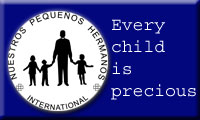A family tradition dating back to 2005 is attending Wintergrass with my parents and children. We love the variety of musical acts and I love being able to knit for hours and hours at a time while listening to the concerts. This picture taken during one of the set breaks makes me smile from ear to ear. My 7 year old daughter was finger-knitting a mile of yarn. She’s also wearing a fantastic shirt sewn by my mother. I love her style.
Several years later, at another Wintergrass, a stranger* seated next to me noticed that Sophie wasn’t engaged in her project, and that I had an enormous basket of yarn under my seat. She offered to teach Sophie straw weaving with some coffee stir sticks she pilfered from the coffee stand. It was a huge hit, consuming her attention and her hands for most of that year.
Gathering abandoned craft materials from the various corners of our house recently, I found a box with yards of straps woven that year and piles of cotton yarn. I kept the best pieces as examples and reclaimed the rest of the yarn.
As we finished up our disc weaving project, some of my students saw a strap-in-progress. They wanted to know more, so I promised to create some sets for the following class.
I threaded several sets of straws with cotton yarn. Using a small hole punch, I punched a hole in the end of a drinking straw cut in half. I measured five 8′ pieces of yarn (the length of my workbench). Each strand is threaded through a straw and folded in half to form the warp (5 pairs of warp threads, each 4′ long). You can start with shorter warps, but my daughter liked really long warps. As she was more interested in process than product, she wanted to be able to weave until the end of time; the extra-long warp threads allowed her to weave without interruption. That’s where my work ended and the students took over.
A strand of yarn (the weft) is wound between the odd number of straws in an infinite pattern. When the weaving fills the straw, scoot it down to compress the weft. At some point, it will have to be scooched off the end of the straws. Be careful not to move too much off, as the weaving will disintegrate. Keeping tension in the woven bits is key. One student commented that at the beginning it looked like a mess that would never hold together but before long it made sense. When the weaving is finished, tie a knot in one end, pull out the straws and knot the other end. The finished product can be used as a belt or strap. Never mind, ask the kids what they think it should be. They will come up with a much better answer than I can imagine.
For more process pictures and shots of a small finished piece, check out this tutorial which describes the process from beginning to end.
*This woman was Mary Gobet, costumer and fiber artist extraordinaire. She had an incredibly intricate purse with her modeled after a Cotswold cottage. Doors and windows opened, half the roof was hinged to open. It made my jaw drop. Lesson leanred: You never know who will sit next to you at a random concert. Screw up your courage and make conversation with a stranger today.
Edit: February 12
A student brought in their finished strap yesterday. He had this piece of advice: don’t focus too carefully on the weaving. When you relax, the strap happens and when you’re trying really hard to make it perfect, the weaving ends up loose and floppy. Just wrap the yarn around the straws and it will come together.
That seems like a good life lesson to follow.
































You must be logged in to post a comment.